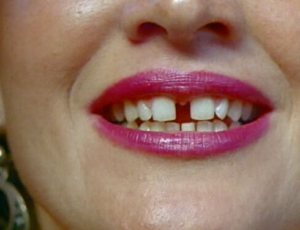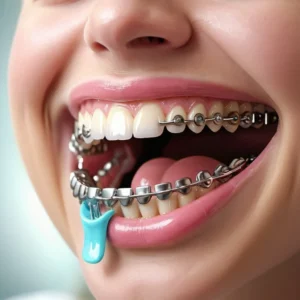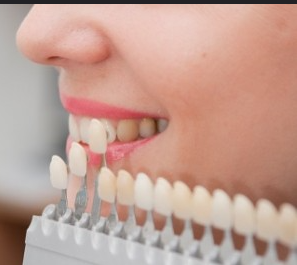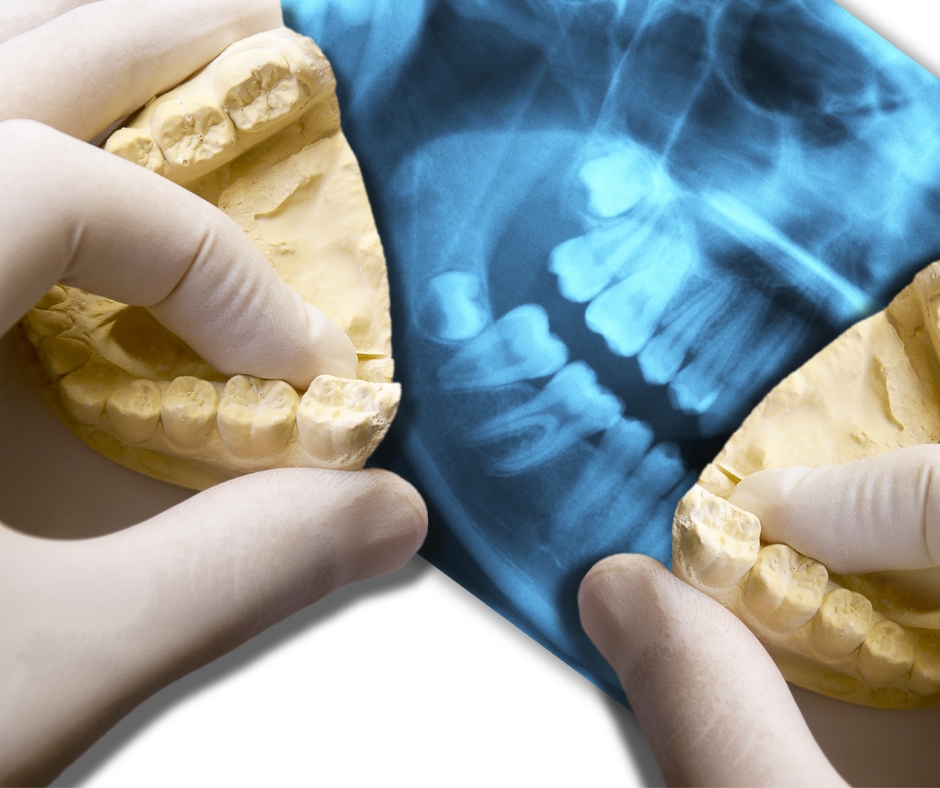Diastema is a space or gap between two teeth. It can occur in both upper and lower dental arches, but it’s more common in the upper arch.
It is considered a natural variation in the dental alignment, treatment is not necessary if it is small or not a cosmetic issue.
Diastema affects both adults and children, but it may disappear in children when permanent teeth grow.

Types of Diastema:
Midline Diastema, the gap appears between the two front teeth in the upper jaw(called the central incisors).
Poly Diastema- refers to multiple gaps between several teeth along the upper or lower jaw.
Causes of diastema
The causes can vary from person to person, some common causes include:
- The size of the teeth:
When teeth are smaller than the jaw bone, as a result, the teeth spread apart leading to a gap formation.
Missing teeth:
The absence of teeth can cause gaps in the dental arch.
Gum tissue issues:
Overgrowth of tissues between upper front teeth and gum line can cause separation between teeth.
Tongue thrust:
Gaps also can happen between lower front teeth, when the tongue pressure during swallowing is against the front teeth instead of the roof of the mouth.
Gum diseases:
Advanced gum diseases can cause tooth migration, because of the damage that happens to tissues and bones that support teeth.
Bad habits:
Thumb sucking and biting of the lower lip can put pressure on the front teeth, and push them forward leading to diastema.
Genetic cause
Diastema can be inherited, with a family history often indicating a higher likelihood.
Effects of diastema
Sometimes Diastema can have functional implications as:
- Sometimes it affects speech clarity.
- Food particles can be trapped in these gaps, which may lead to potential oral health issues.
- Sometimes it can negatively affect self-confidence about how one looks when smiling.
Treatment of diastema
Treatment of diastema may not be necessary for some people, as it’s just a cosmetic issue and doesn’t cause any problems.
But if you don’t like the appearance of diastema or if the cause is gum disease, consulting the dentist is a good option for the treatment of this problem.
Choosing the right treatment
Choosing the right treatment requires evaluation by the dentist, and depending on the underlying causes, some factors should be considered:
- The severity of the gap(large gaps require extensive treatment).
- Patient’s age(treatment is more effective in younger patients).
- The desired outcome of the patient affects the treatment plan.
- The condition of teeth and gums will determine the suitable treatment plan.
Treatment options
The dentist can help in determining the most suitable treatment options according to the cause of diastema.
Treatment options include:
- Braces

Braces are the common treatment, they are used to apply pressure on teeth, this pressure gradually moves the teeth into the proper alignment and closes the gap.
It may be necessary sometimes to wear full braces, as moving any teeth affects the entire mouth.
Invisible or removable braces may fix some cases of diastema.
- Veneers

Veneers are a very good choice for diastema caused by smaller teeth. Veneers are tooth-colored composites, which are used to fill gaps or applied over teeth to improve their appearance if they are chipped or cracked, So veneers are ideal for patients with discolored or chipped teeth in addition to diastema.
- Dental bonding
It’s a composite resin material, applied to teeth to fill the diastema gap.
Bonding may not be suitable for larger gaps.
- Treatment of gum diseases
Severe gum diseases may require surgical interference, to remove the deeply accumulated plaques within the gum.
Surgery also can involve bone grafting or soft tissue grafts according to the severity of the case.
Preventing of diastema
If diastema is due to a genetic cause, it’s not preventable.
If diastema is due to gum disease or bad habits, it’s helpful to consider the following to reduce the risk of developing diastema:
- Discourage the habit of thumb-sucking as early as possible.
- Brush your teeth twice/a day, and use dental floss once a day to prevent gum diseases.
- Regular examination and cleaning of your teeth at the dentist to prevent plaque formation also help in the early detection of diastema.
Diastema in children
Diastema is common in children, it occurs during transition from temporary to permanent teeth and is called false diastema.
Diastema in children often closes on its own by the time the complete eruption of permanent teeth occurs.
The bottom line, diastema is a gap between two teeth, commonly seen in the upper front teeth.
Treatment is necessary if diastema is caused by gum diseases, consulting a qualified dentist is essential to determine the most suitable way of treatment.





